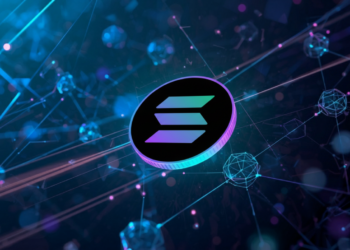Cryptocurrency mining has evolved significantly since the early days of Bitcoin. What once required only a personal computer and some technical know-how now demands specialized hardware, significant electricity, and a bit of luck. As mining difficulty increased, a new concept emerged to level the playing field: mining pools.
In this blog post, we’ll break down what mining pools are, how they work, their pros and cons, and how to choose the right one. Whether you’re a crypto enthusiast or a curious beginner, this guide will help you understand the collaborative world of mining pools.
What Is a Mining Pool?
A mining pool is a group of cryptocurrency miners who combine their computational resources over a network to increase the chances of finding a block and earning rewards. Instead of mining individually and competing against each other, miners in a pool work together and share the rewards proportionally based on the amount of work they contribute.
Think of it like a lottery syndicate: instead of buying one ticket on your own, you join a group that buys many tickets. If any ticket wins, the prize is split among the group members.
Why Mining Pools Exist
Mining a block in cryptocurrencies like Bitcoin is a competitive process. Only the first miner to solve a complex mathematical puzzle gets to add the block to the blockchain and receive the reward. As the network grows and the difficulty increases, solo mining becomes less viable for individuals.
Mining pools solve this problem by:
- Reducing variance: Instead of waiting weeks or months for a solo reward, miners receive smaller, more frequent payouts.
- Increasing chances: Pooling resources increases the probability of solving a block.
- Lowering entry barriers: Even miners with modest hardware can participate and earn.
How Mining Pools Work
Here’s a simplified breakdown of how a mining pool operates:
- Joining the Pool: A miner connects their hardware to the pool’s server.
- Work Distribution: The pool assigns smaller, easier tasks (called “shares”) to each miner.
- Mining Process: Each miner works on their assigned share.
- Block Discovery: When the pool collectively finds a valid block, the reward is distributed among participants.
- Payout: Miners receive payouts based on their contribution, usually measured in shares submitted.
Types of Mining Pool Reward Systems
Mining pools use different reward distribution methods. Here are the most common ones:
1. Pay-Per-Share (PPS)
- Miners are paid a fixed amount for each share submitted.
- Offers consistent payouts.
- Pool operator takes on the risk of block discovery.
2. Proportional (PROP)
- Rewards are distributed based on the number of shares a miner contributes during a round.
- Payouts vary depending on when a block is found.
3. Pay-Per-Last-N-Shares (PPLNS)
- Only the last “N” shares are considered for payout.
- Encourages long-term participation.
- More variance in payouts but potentially higher rewards.
4. Score-Based
- Shares are weighted by time; recent shares are worth more.
- Reduces pool-hopping (switching pools frequently).
Pros and Cons of Mining Pools
✅ Advantages
- Steady Income: Regular payouts reduce the unpredictability of solo mining.
- Lower Risk: Shared effort means shared risk.
- Accessibility: Even small-scale miners can earn rewards.
- Community Support: Many pools offer forums, tutorials, and support.
❌ Disadvantages
- Fees: Most pools charge a fee (typically 1-3%) on rewards.
- Centralization Risk: Large pools can dominate the network, threatening decentralization.
- Trust Issues: You must trust the pool operator to distribute rewards fairly.
- Reduced Autonomy: You follow the pool’s rules and decisions.
Popular Mining Pools in 2025
As of 2025, here are some of the most reputable mining pools:
| Pool Name | Supported Coins | Fee | Payout Method | Notable Features |
|---|---|---|---|---|
| F2Pool | BTC, ETH, LTC | ~2.5% | PPS+ | Global servers, mobile app |
| Antpool | BTC, BCH | ~1% | PPLNS | Owned by Bitmain |
| ViaBTC | Multiple | ~2% | PPS, PPLNS | Cloud mining support |
| Binance Pool | BTC, ETH | ~2.5% | FPPS | Integrated with Binance exchange |
| Slush Pool | BTC, ZEC | ~2% | Score-based | Oldest mining pool |
Note: Always check the latest stats and reviews before joining a pool.
How to Join a Mining Pool
Joining a mining pool is relatively straightforward. Here’s a step-by-step guide:
- Choose Your Coin: Decide which cryptocurrency you want to mine.
- Select a Pool: Compare pools based on fees, payout methods, and reputation.
- Set Up Hardware: Use ASICs or GPUs depending on the coin.
- Install Mining Software: Popular options include CGMiner, BFGMiner, and EasyMiner.
- Configure Settings: Input the pool’s server address, your wallet address, and worker credentials.
- Start Mining: Launch the software and monitor your performance.
Tips for Choosing the Right Mining Pool
- Low Fees: Look for pools with competitive fees.
- Reliable Uptime: A good pool should have minimal downtime.
- Transparent Stats: Pools should provide real-time data on hash rate, earnings, and blocks.
- Good Reputation: Check forums and reviews for user feedback.
- Geographic Proximity: Choose a pool with servers close to your location for better latency.
Are Mining Pools Profitable?
Profitability depends on several factors:
- Electricity Costs: Lower costs = higher profits.
- Hardware Efficiency: Newer, more efficient miners perform better.
- Coin Value: Higher coin prices increase rewards.
- Pool Fees: Lower fees mean more earnings.
Use online calculators like WhatToMine or NiceHash to estimate your potential earnings based on your setup.
The Future of Mining Pools
As blockchain technology evolves, so do mining pools. Here are some trends to watch:
- Decentralized Pools: Projects like P2Pool aim to reduce centralization by creating peer-to-peer mining pools.
- Eco-Friendly Mining: Pools may prioritize green energy sources.
- Merged Mining: Mining multiple coins simultaneously to maximize profits.
- AI Optimization: Smarter algorithms for better resource allocation.
Final Thoughts
Mining pools have become an essential part of the cryptocurrency ecosystem. They democratize mining, making it accessible and profitable for individuals who might otherwise be left out. While they come with trade-offs like fees and reduced autonomy, the benefits often outweigh the downsides—especially for beginners.
Whether you’re just starting out or looking to optimize your mining strategy, understanding how mining pools work is a crucial step. Choose wisely, stay informed, and happy mining!
Join Us : Twitter | Website | GitHub | Telegram | Facebook | YouTube























